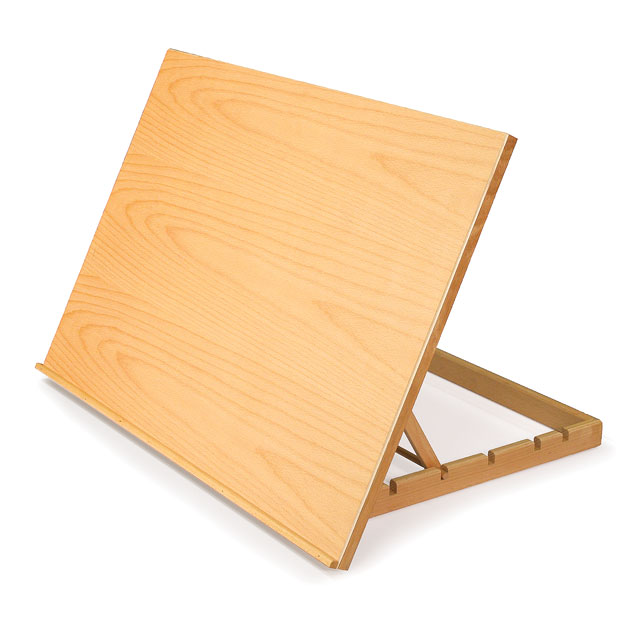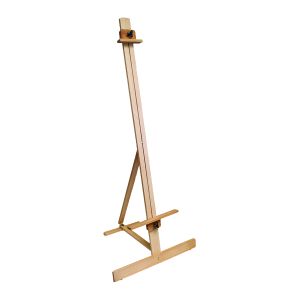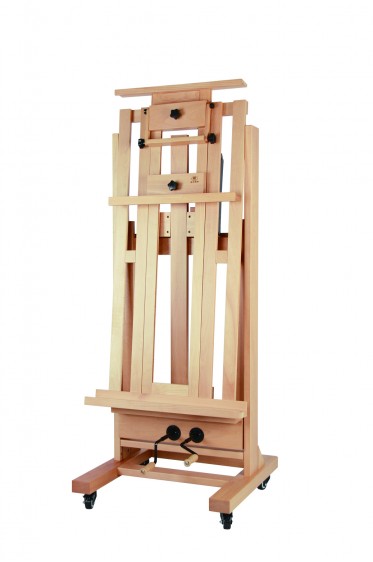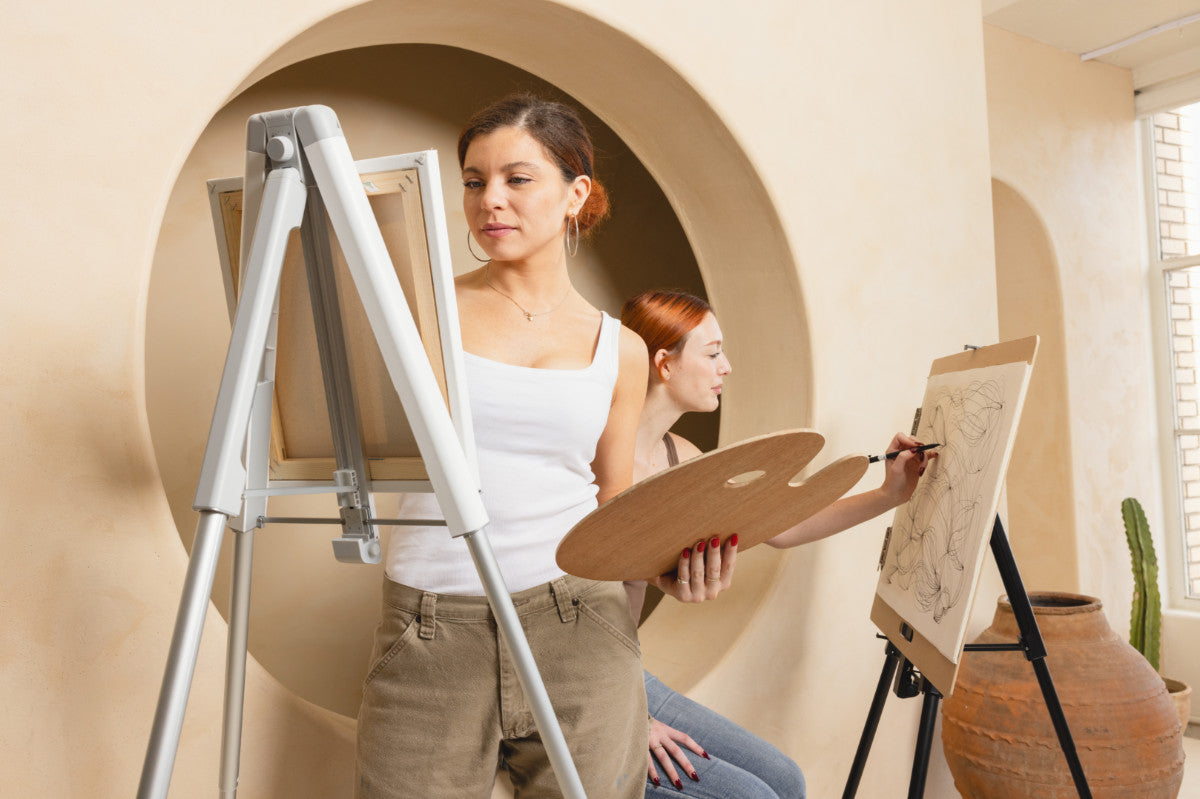Finding the right easel can make or break your painting experience. The perfect easel holds your canvas steady and fits your specific needs. This guide helps you pick an easel that works for your art style, space, and budget.
Do You Even Need An Easel?
Honestly? Not necessarily. Some artists never use one. They paint on the floor, tape paper to the wall, or prop their canvas against whatever’s around. But easels do make life easier. They hold your work at a good height, help with posture, and make it easier to step back and see the whole picture. If you’ve ever spent hours hunched over a table, you know how much your neck and back can hate you for it.
That said, if you’re comfortable without an easel, that’s fine too. There’s no rule saying you must have one to be a “real” artist.
Should Beginners Get One?

Not right away. If you’re just getting started, you don’t need to rush out and buy the fanciest easel you can find. A lot of beginners paint on tables or clip their paper to a board. But once you try an easel, you might never go back. It just makes painting easier and way more comfortable. So, while it’s not required, it’s something to think about.
What Makes A Good Easel?
If you do decide to get one, here’s what actually matters:
-
Stability: If it wobbles every time you make a brushstroke, it’s no good.
-
Adjustability: Being able to tilt and raise/lower your easel helps a ton.
-
Material: Wood is classic and sturdy. Metal is lightweight and portable.
-
Size: Painting big? Get an easel that can handle large canvases. Working small? A tabletop easel might be enough.
How Many Easels Do You Actually Need?
That depends on a few things:
1. How Much Space Do You Have?
Measure your art area before buying an easel. Big studio easels need room to stand freely. Small apartments call for compact options that fold away.
Think about ceiling height too. Tall easels might not fit in rooms with low ceilings. Know your space limits to avoid buying the wrong size.
2. Do You Paint in Different Places?
Will you move your easel often? Weight matters if you paint outdoors or take classes. Look for lightweight frames that fold up small. Some come with handy carrying cases.
Studio artists can pick sturdier, heavier models. These stay put and offer more stability. Your painting habits should guide this choice.
3. What’s Your Style?
Different art styles need different easels. Oil painters need sturdy frames for heavy canvases. Watercolorists often need flatter angles to control paint flow.
Consider your medium first when choosing an easel. Each type has features built for specific kinds of art. Match the easel to how you paint for best results.
4. Budget
Good easels exist at all price points. Beginners can find simple models under $50. Professional studio easels might cost several hundred dollars.
Think long-term when setting your budget. A quality easel can last decades with proper care. Invest what you can afford in a tool you'll use for years.
5. Storage
Where will your easel live when not in use? Some fold flat against walls. Others need dedicated floor space all the time.
Apartment dwellers should pick models that store easily. Studio owners have more freedom to choose permanent setups. Plan for both using and storing your easel.
6. Personal Preference
Your comfort affects your art quality. Do you prefer sitting or standing? Do you like big canvases or small ones?
Try out different easels if possible. The right fit feels natural to use. Trust your instinct about what works for your body and style.
Types of Easel Stands
Tabletop Easel

These small easels sit on desks or tables. They work well for small paintings and tight spaces. Many fold flat for easy storage.
Tabletop models cost less than full-size easels. They make great starter options for new artists. Their light weight makes them perfect for travel too.
Convertible Easel

These switch between flat and upright positions. You can paint watercolors flat, then oils vertically on the same easel. This flexibility suits artists who use many mediums.
Most convertible easels adjust to many angles. They save money and space compared to buying separate easels. Look for solid locks that hold your chosen position firmly.
H-frame Easel

H-frames look like their namesake letter. Two vertical posts connect with horizontal supports. This design creates incredible stability for large works.
Professional studios favor H-frames for their strength. They hold heavy canvases without wobbling. Most have wheels to move around despite their weight.
Display Easels

These show finished art rather than support works in progress. They often have decorative touches and lighter construction. Galleries and homes use them to showcase special pieces.
Display easels focus on looks more than function. They might lack the adjustments needed for painting. Choose these for showing, not creating, your art.
Single Mast Easel

These use one main support pole instead of two. They take up less space than H-frames while providing good stability. The design works well for medium-sized canvases.
Single mast models cost less than full H-frames. They offer a good balance of features and price. Many artists start with these before upgrading later.
A-frame Easel

Also called tripod easels, these have three legs on a triangular base. They fold easily for storage and transport. Most painters can set them up in seconds.
A-frames suit artists who move between locations. They weigh less than H-frames but hold canvases securely. Their compact size works well in small studios.
A-frame Easel (Lyre Easel)

This specialized A-frame has a lyre-shaped top section. The curved design adds beauty to function. Many traditional artists prefer these for their classic look.
Lyre easels blend into home decor better than industrial models. They work as both painting tools and display pieces. The design has changed little in hundreds of years.
Giant Easel

Extra-large easels hold murals and oversized canvases. They stand over six feet tall and have reinforced supports. Art schools and professional studios use these for major projects.
These specialty tools cost more than standard easels. They need dedicated space and rarely fold down. Giant easels suit artists who regularly work on large-scale pieces.
Children's Easels

Kid-sized easels bring art down to child height. Many feature chalkboards or whiteboards besides canvas holders. Bright colors and simple designs make art fun for young creators.
Safety features like rounded corners protect little artists. Double-sided models let two children paint at once. These build creative habits from an early age.
Hybrid Easels
These combine features from different easel types. You might find an H-frame that folds or a tabletop with A-frame elements. Hybrid designs offer custom solutions for specific needs.
The variety in this category means careful shopping. Look for hybrids that solve your particular challenges. Many artists find their perfect easel in these creative combinations.
Portable Easels
 Also called field easels, these focus on extreme portability. They collapse small enough to fit in backpacks. Plein air painters rely on these lightweight frames.
Also called field easels, these focus on extreme portability. They collapse small enough to fit in backpacks. Plein air painters rely on these lightweight frames.
Many portable easels include storage for supplies. They set up quickly on uneven ground. Weather resistance matters for these outdoor companions.
Sketch Easels

These lightweight stands hold sketchpads instead of heavy canvases. They adjust quickly for drawing sessions. Artists use them for figure drawing and outdoor sketching.
Sketch easels weigh less than painting easels. They prioritize fast setup over maximum stability. Many include clips to secure paper in breezy conditions.
Studio Easels

Professional-grade easels built for daily use fill this category. They feature heavy materials and precision adjustments. Working artists depend on these durable tools.
Studio easels cost more but last longer. They resist wear from constant adjustments. The investment pays off for serious painters who work daily.
Can You Paint Without An Easel?
Of course! Tons of artists don’t use one. You can work flat, prop your canvas against the wall, or make your own DIY setup. An easel is helpful, but it’s not a requirement.
Product Recommendations:
Conclusion
At the end of the day, most artists are fine with just one easel. But if you paint in different places, use different techniques, or just like options, having more than one could be handy. It’s all about what makes painting more enjoyable for you.


